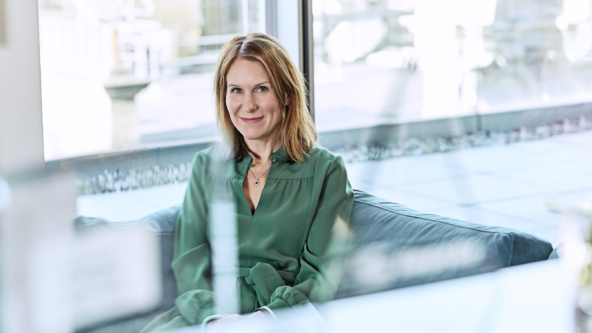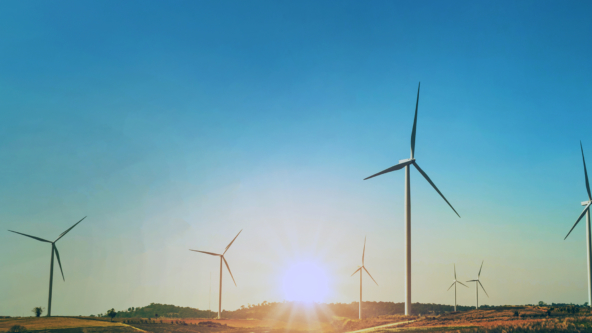Wowed by wind farms: inspiring and educating the schoolkids of Aberdeenshire
When 32 schoolchildren from Newtonhill Primary School in Aberdeenshire wrote to Octopus asking whether they could visit one of our wind farms, the chance to take them on a field trip was too good to pass up.
A couple of months ago, teacher Aimee Bainbridge from Class P6 encouraged all her pupils to write a letter explaining why they wanted to visit their local wind farm, owned and operated by Octopus Renewables. The kids, between the ages of 9 and 11, were all highly skilled in the art of persuasive writing, as their letters revealed.
Between them, they were not averse to offering flattery (“We heard you guys were the BEST!”, “You will make my DREAM COME TRUE if you let our class go”) as well as other incentives to encourage Octopus to rubber stamp the trip (“If you let us come we will pay you £1000 and give you a pet puppy”). Some kids resorted to plain old emotional blackmail: “Ever since I was 4 years old I’ve been fascinated by wind turbines”, “We want to see how wind turbines can change our world”, “If you can’t let us come we will understand, but we will be creating puddles with our tears” and “You don’t want to let 32 schoolchildren down, do you?”.
An offer too good to refuse
It was hard to resist such charming and enthusiastic requests, particularly in an area that has historically been driven by the oil & gas industry, so it was agreed that in July, Class P6 would be welcomed on a field trip to the Hill of Auquhirie wind farm, based near Stonehaven.
Joining the class were Harrison Brook and Caitlin Wale from Octopus Renewables, along with Ivan O’Neil from BayWa.re (the company that manages the Hill of Auquhirie wind farm site), Angus Robertson (who manages our wind community benefit funds), and a representative from the local Kincardineshire Development Partnership (the local authority that administers community benefit funding from wind farms in the area).
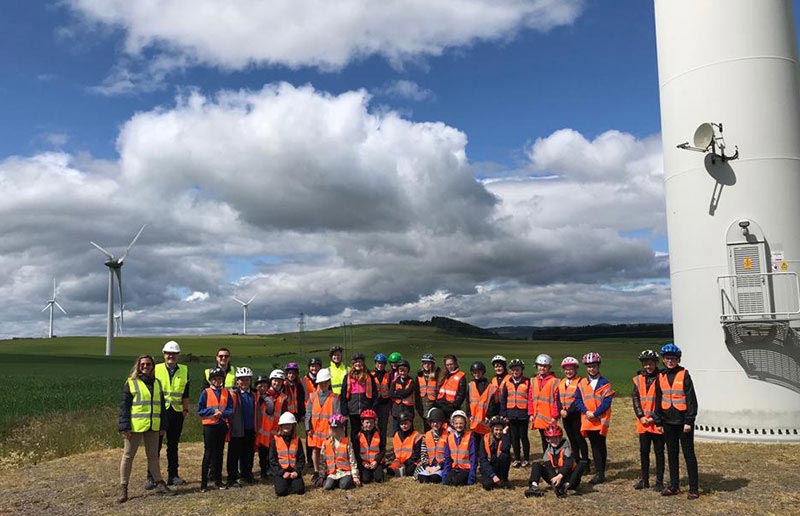
Field trip: Tuesday 2 July
It was a windy, sunny day and the students were really excited to get to the site. The first thing they did was run off the bus and lay on the ground directly under the turbine, looking up in amazement at the spinning blades for about 15 minutes. Ivan O’Neill from BayWa conducted an overview of the basics of how wind energy works and answered dozens of questions from the students, including:
- How many times does the wind turbine spin a day? Using a wind speed of 6.1m/s and a rotor speed of 11.5 RPM, we calculated the number to be 16,560 revolutions per day.
- How much electricity does one wind turbine generate? Given a turbine rated power of 2MWh, and an average kettle requirement of 2kWh, in one hour, a turbine could power the equivalent of 1,000 kettles.
- How are wind turbines made? In different parts using different composite materials which are the assembled together.
- How long does it take to make a wind turbine? Given a sophisticated assembly line, up to a week.
- What are the out-jutting things on the top for? Aerial lights for aeroplanes to see when they fly over wind farms.
Angus Robertson then gave another presentation on the wider social and environmental impacts of renewable energy. This particularly resonated with the kids from Newtonhill Primary School, which has recently had rooftop solar panels installed.
Testing their environmental knowledge
After the site visit, the pupils took part in a wind energy quiz to win some exciting Octopus gift bags. The Octopus team were highly impressed with their answers, and their level of understanding around sustainability issues, but when Caitlin asked: “which animal inspired the upturned wing tips at the end of Enercon’s turbine blades”, she didn’t expect their first guesses to be “hedgehog” and “rhinoceros”. The correct answer is bird’s wings, of course. The rather impressive wind turbine Lego set Octopus brought up as a gift for the class was also well received, and will be taking a proud place in the P6 classroom.
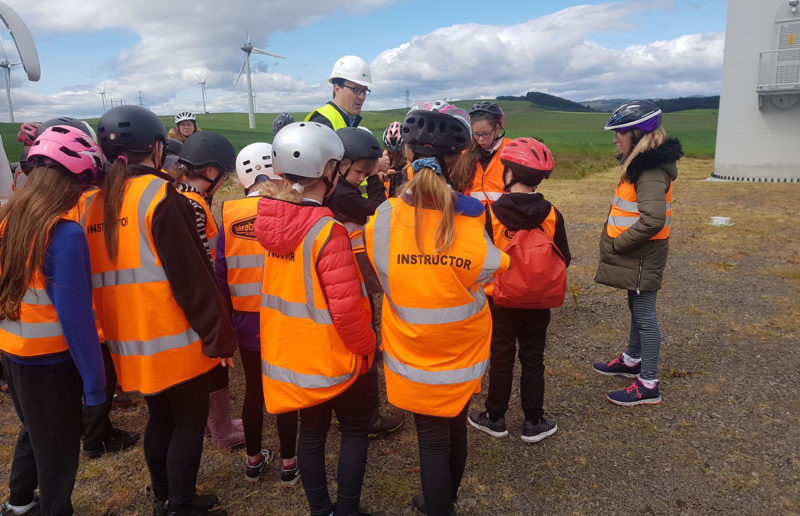
Inspiring a generation to put sustainability needs first
And after the field trip, the Octopus team was delighted to receive an email from Class P6’s teacher Aimee, thanking Octopus for the experience. Here’s what Aimee said:
“It is difficult to find appropriate words that will allow me to convey how incredibly grateful I am for your combined efforts, hospitality and generosity today. From the experience of seeing a wind turbine that close, to the level of information available to them. This is an experience they will remember their whole lives and who knows what it could lead to for any of them? The world certainly needs their generation to be passionate about renewable energies and sustainable living.”
Aimee Bainbridge, Newtonhill Primary School, Aberdeenshire
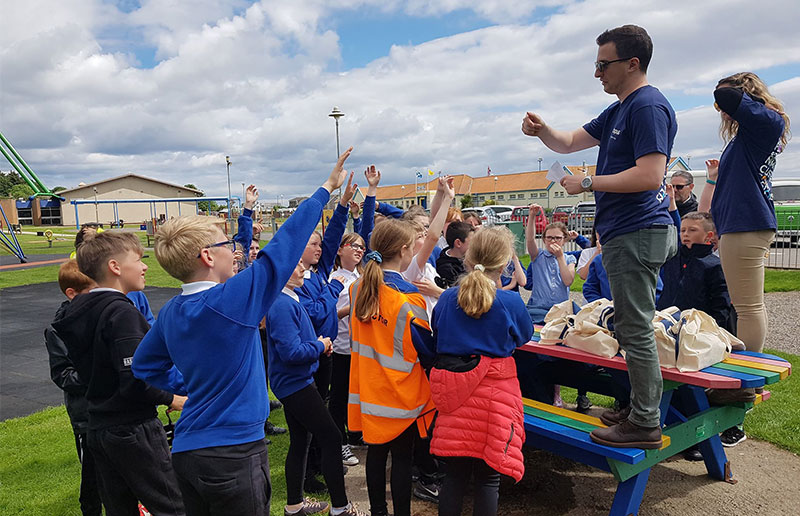
The Octopus commitment to clean energy
Since entering the renewables market in 2010, Octopus Renewables has grown to become the largest investor/owner of solar power in Europe, as well as growing to become a leading investor in onshore wind. The team currently manages a global portfolio of renewable energy assets valued at more than £3 billion.
The team works closely with institutional investors to create bespoke portfolios of large-scale renewable energy assets. Recent international expansion has also seen significant new renewable investments in Australia, Finland, France and Italy.
This has created a portfolio of clean energy assets with a combined capacity of 2.3 Gigawatts, producing enough electricity to power homes in a city the size of Manchester.
Giving back to local communities
Octopus Renewables currently owns and operates seven wind farm sites across the UK. As part of this commitment, we contribute more than £1 million per year to the communities surrounding these wind farms through Community Benefit Funds.
This money is distributed to these communities in the form of grant funds, student scholarships and energy bill subsidies. Octopus has set up Fern Community Funds to manage and disburse this funding, with supported projects including (among many others):
- Trees for Life: supporting events and activities that explore the natural environment in and around Fort Augustus and Glenmoriston, Scotland.
- Glenmoriston Sustainable Deer Management Project: funding the appointment of an ecological consultant to assist the Deer Management Group in completing a programme of herbivore impact assessments across the Glenmoriston, Scotland area.
- Old Convent Land Housing Project: partially funding the build of 12 affordable homes for social rent in the village of Fort Augustus, Scotland.
- Flixborough Disaster Memorial Restoration: supporting the restoration and maintenance of a memorial to those that died in the 1974 Flixborough Explosion in North Lincolnshire.
- Tarbert Castle Trust Community Archaeological Dig: supporting an archaeological dig to further investigate the castle ruins and introducing young people to historical research and archaeology through local schools and youth groups.
Bringing the ‘cool’ factor to Octopus
The letters written by Class P6 are currently posted up on the walls surrounding the Octopus Renewables team. They serve as a constant reminder, not only that their work is vitally important to the sustainability of the planet, but also that there’s a generation of children growing up who are learning about clean energy and think wind farms and other sources of clean energy are ‘pretty cool’.
